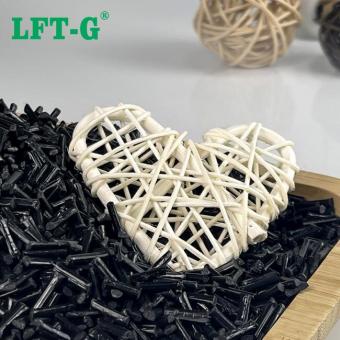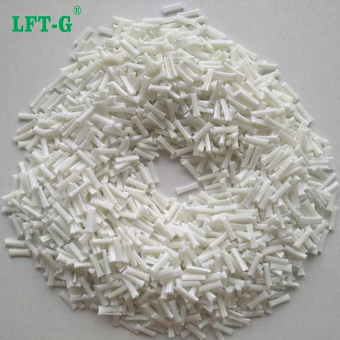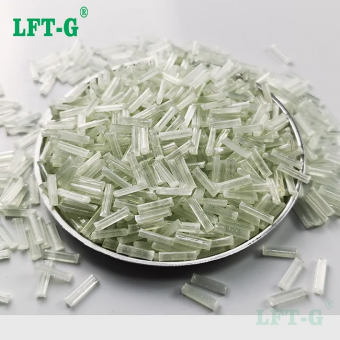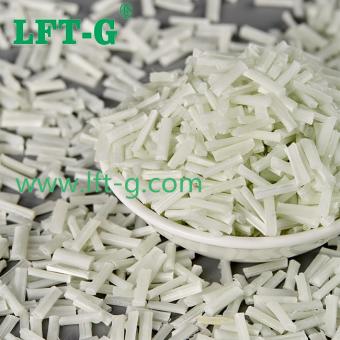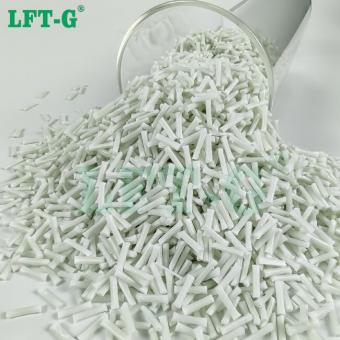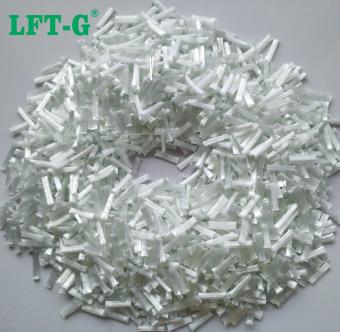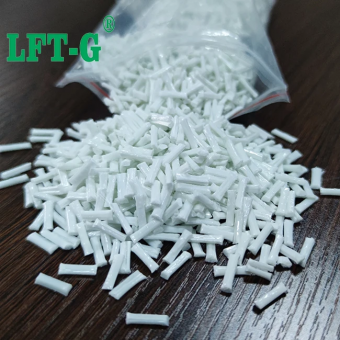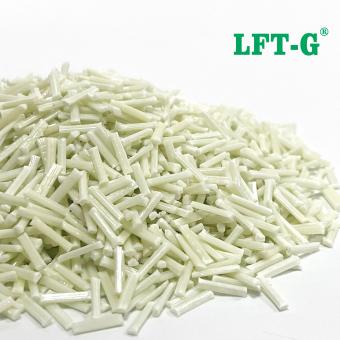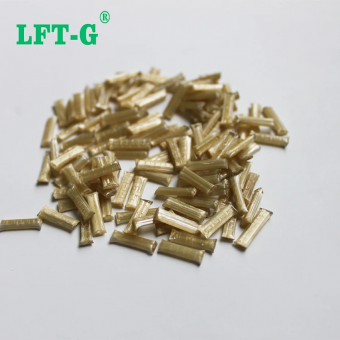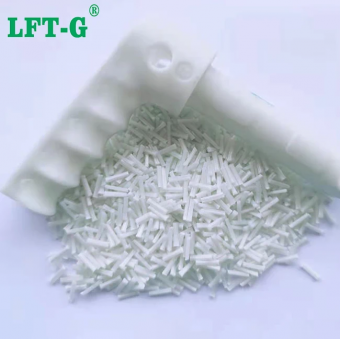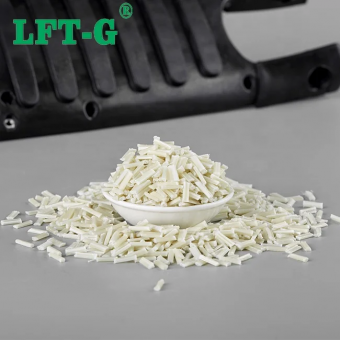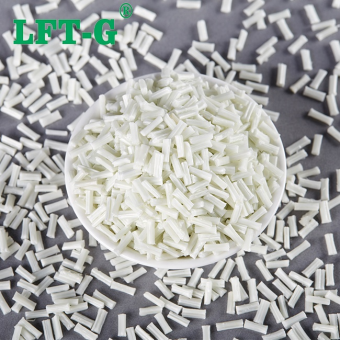-
Materiais de carbono avançados pp resina longa fibra de carbono bolinhas cheias de carbonoPP Longo Material Reforçado com Fibra de Carbono oferece resistência excepcional e propriedades leves, tornando-o ideal para aplicações de alto desempenho Sua rigidez superior e resistência ao impacto aumentam a durabilidade do produto e a integridade estrutural Amplamente utilizado em componentes automotivos, drones e industriais, garante excelente desempenho mecânico.
- pp cf30
- Fabricante de grânulos de polipropileno
- PP PELETS COPOLYMER
- copolímero vs homopolímeros pp
- composto de fibra de carbono pp
- Materiais reforçados com fibra de carbono
Tags :
-
Pellets de fibra de vidro longos de resina de alta resistência resina longaMateriais modificados de fibra de vidro longo abd alta resistência, excelente resistência ao impacto e resistência ao calor, amplamente utilizado em indústrias como eletrodomésticos automotivos, eletrônicos e domésticos O reforço de fibras de vidro longas aumenta a rigidez e a resistência à fadiga do material É adequado para produtos industriais que exigem alta resistência e desempenho.
- ABS reforçado com fibra de vidro
- composto de fibra de vidro ABS
- fabricante de grânulos ABS
- cor de abdômen natural
- Materiais avançados da LFT
- butadadieno de acrilonitrila
Tags :
-
Alta resistência à tração TPU Resina longa Fibra de vidro Pellets cheios de vidroComposto de fibra de vidro longa TPU Apresenta resistência à alta resistência, resistência e desgaste, tornando -o ideal para ferramentas elétricas, peças automotivas e equipamentos esportivos Oferece excelente resistência ao impacto, estabilidade dimensional e um alternativa leve ao metal.
- Pellets de plástico TPU
- tecido composto de tpu
- Indústria automotiva da TPU
- Brãos de TPU para moldagem por injeção
- TPU TOE Cap
- Fábrica da China TPU
Tags :
-
China LFT de alta tenacidade mxd6 enchimento de fibra de vidro longa de fibra de vidro longaNylon - MXD6 é uma espécie de resina de poliamida cristalina, que é sintetizada pela condensação da m -benzoilamina e ácido adipico.
- Resina de nylon cristalino mxd6 gf bom preço
- Materiais compósitos com fibra de vidro longa MXD6
- MXD6 de plástico de desempenho superior
- Feito na China Produtos Compostos MXD6
- Vidro de fibra plástica personalizada Adicione alta comprimento s MXD6
- Resina Termoplástica Resina Termoplástica
Tags :
-
Polietileno de alta densidade reforçado com fibra de vidro longo LFT para uso industrialPolietileno de alta densidade (HDPE), também chamado de alta densidade de polietileno (PEHD), é um polímero termoplástico feito do etileno de monômero Quando usado para tubos HDPE, às vezes é chamado de "alquateno" ou "polieteno" Com uma alta proporção de força / densidade, polietileno de alta densidade (HDPE) é usado para produzir tubulações resistentes à corrosão Além disso, o HDPE é comumente reciclado.
- vidro HDPE
- tubo composto HDPE reforçado com fibra
- Pellets LFT
- fibra de vidro longo
- Compostos de fibra longa
- Compósitos termoplásticos de fibra longa
Tags :
-
LFT LONG LONG FIBRO DE VIDRO MOLIFICAÇÃO DE INJEÇÃO DO COMPOSTO DE PLAPolyphthalamide is a high-performance resin and member of the nylon family com propriedades térmicas, mecânicas e físicas excepcionais É higroscópico, opaco, semicristalino e pode ser usado na moldagem por injeção de plástico A maioria dos PPA são cheio de fibra de vidro ou fibra de carbono Para aumentar a rigidez para aplicações de alta temperatura Como resultado, o PPA é frequentemente usado em aplicações no lugar de metal ou termoplástico de preço mais alto.
- dispensador de resina plástica reforçada com fibra de vidro por atacado na China
- Preço do PLA por kg
- Fornecedores de resina termoplástica
- PLA reforçado
- plástico de ácido polilático (PLA)
- PLA PELLETS
Tags :
-
LFT Long Glass Reforced PBT Compostos Injeção MoldagemA poliftalamida é a alto desempenho resina e membro da família de nylon com propriedades térmicas, mecânicas e físicas excepcionais É higroscópico, opaco, semicristalino e pode ser usado na moldagem por injeção de plástico A maioria dos PPA são cheio de fibra de vidro ou fibra de carbono Para aumentar a rigidez para aplicações de alta temperatura Como resultado, o PPA é frequentemente usado em aplicações no lugar de metal ou termoplástico de preço mais alto.
- Materiais PBT de alto desempenho
- Materiais compósitos PBT para aplicações industriais
- PBT termoplástico para peças de alta temperatura
- fibra de vidro longa PBT para fabricação
- compósitos de fibra longa PBT de alta resistência
- Termoplásticos PBT sustentáveis
Tags :
-
Compostos PPA reforçados com fibra de vidro longos LFTA poliftalamida é a alto desempenho resina e membro da família de nylon com propriedades térmicas, mecânicas e físicas excepcionais É higroscópico, opaco, semicristalino e pode ser usado na moldagem por injeção de plástico A maioria dos PPA são cheio de fibra de vidro ou fibra de carbono Para aumentar a rigidez para aplicações de alta temperatura Como resultado, o PPA é frequentemente usado em aplicações no lugar de metal ou termoplástico de preço mais alto.
- Materiais PPA para aplicações aeroespaciais
- compósitos PPA para peças automotivas
- Materiais compósitos OEM PPA
- PPA para componentes e dispositivos elétricos
- Plástico reforçado com PPA para aplicações estruturais
- Termoplástico reforçado com PPA
Tags :
-
LFT LONG FIBRO REFORMENTO DE POLIPENILENILENELO SULFUTO DE FLAME retardanteLFT®PPS-NA-LGF IS composto PPS reforçado com vidro, que é preenchido com fibra de vidro com base na resina PPS A característica dos compostos de PPS inclui boas propriedades mecânicas, alta rigidez, alta resistência à fluência, resistência à alta temperatura, resistência à chama, resistência a produtos químicos, excelentes propriedades de isolamento elétrico, resistência à arco, baixa absorção de água, encolhimento de baixo molde, processamento fácil, boa estabilidade dimensional e resistência à radiação.
- PPS composto de fibra longa
- Fibra de vidro PPS para uso industrial
- Materiais de alta resistência do PPS
- PPS termoplástico para alta temperatura
- PPS reforçado com fibra de vidro longo
- Polifenileno sulfeto de alto desempenho plásticos
Tags :
-
Nylon reforçado com fibra longa LFT 12 compostos de alto desempenhoPA 12 (também conhecido como nylon 12) é um bom Use geral plástico com amplas aplicações aditivas e é conhecido por seu resistência, resistência à tração, força de impacto e capacidade de flexionar sem fratura A PA 12 tem sido usada há muito tempo por moldadores de injeção devido a essas propriedades mecânicas Se você ● estar considerando convertendo peças de metal Para o plástico, o PA12 será uma boa escolha.
- Materiais PA12 de alto desempenho
- composto de fibra de vidro PA12 leve
- Materiais avançados de fibra longa PA12 para fabricação
- Termoplásticos reforçados com fibra PA12
- Materiais compósitos PA12 para eletrônicos
- Fornecedor de materiais compósitos PA12
Tags :
-
LFT LONG FIBRO REFORNO NYLON 66 Compostos de alta resistênciaLFT Long Glass Reforced PA66 Material Oferece força excepcional, resistência ao impacto e estabilidade dimensional Com suas propriedades mecânicas superiores, é ideal para aplicações de alto desempenho em componentes automotivos, eletrônicos e industriais, fornecendo durabilidade e confiabilidade a longo prazo.
- Termoplásticos reforçados avançados
- Polímeros reforçados com fibras longas (LFRP)
- Materiais compostos de fibra longa para ferramentas elétricas
- Moldagem de injeção Materiais de fibra longa
- Materiais compósitos reforçados com PP/PA
- Materiais compostos duráveis para eletrônicos
Tags :
-
China lft-g nylon poliamida 6 composto de fibra de vidro comprido modificado de plástico cor originalA poliamida, que também é conhecida pelo nome comercial, Nylon, possui excelentes propriedades resistentes ao calor, especialmente quando combinadas com aditivos e materiais de enchimento. Além disso, o nylon é muito resistente à abras、o . A Xiamen LFT oferece uma ampla gama de nylons resistentes à temperatura com muitos materiais de enchimento diferentes .
- Materiais de resina termoplástica PA6
- nylon 6 grânulos
- grânulos de plásticos reforçados com fibra de vidro
- Compostos de fibra longa PA6
- Moldagem de injeção de plástico
- Material reforçado com LFT-G.
Tags :

 o email
o email português
português English
English français
français Deutsch
Deutsch русский
русский italiano
italiano español
español العربية
العربية 日本語
日本語 한국의
한국의 中文
中文












